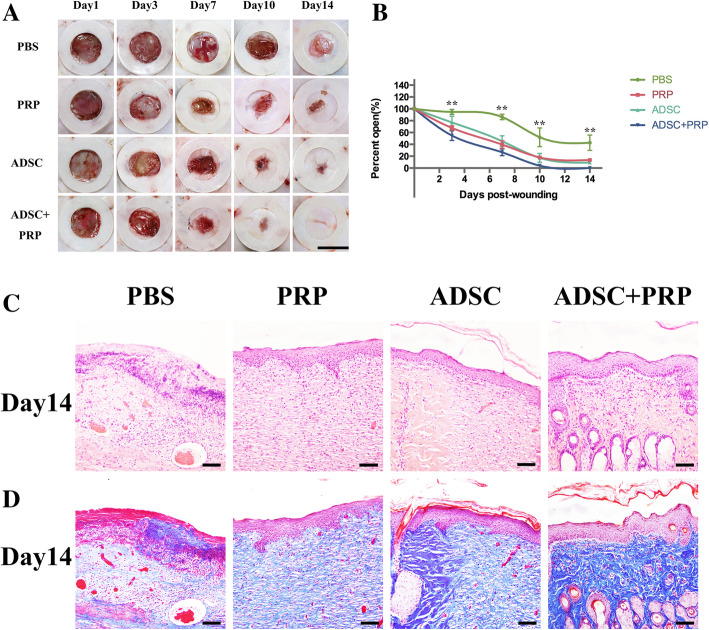Fig. 3.
Wound healing in a diabetic rat excisional wound model and histology of wound beds posttreatment. a Representative images of the wounds show that compared to PBS, PRP, and ADSCs, treatment with ADSC+PRP accelerated wound healing, and full epithelialization was observed by day 10. Scale bar = 1 cm. b The wound closure percentage was evaluated postwounding. The ADSC+PRP group exhibited significantly accelerated wound healing compared to that exhibited by the other groups. Values were expressed as mean ± SEM (n = 12 animals per group, 24 wounds total per group). Statistics were performed using one-way ANOVA and showed statistically significant differences between groups, all six combinations of groups (PBS and PRP, PBS and ADSCs, PBS and ADSC+PRP, PRP and ADSCs, PRP and ADSCs+PRP, and ADSCs and ADSCs+PRP) were statistically significant with *p < 0.05 or better, as evaluated by Tukey post hoc test. c Hematoxylin and eosin staining on day 14 postwounding showed a thicker epidermis and increased appendages in the dermis of the ADSC+PRP group compared with the other groups. Scale bars = 50 μm. d Collagen deposition in the dermis was visualized with Masson’s trichrome staining and microscopy. The analysis generally demonstrated that compared to PBS, PRP, and ADSCs, treatment with ADSC+PRP promoted epithelialization. Scale bars = 50 μm (significance was set to *p < 0.05, **p < 0.01, and ***p < 0.001)

